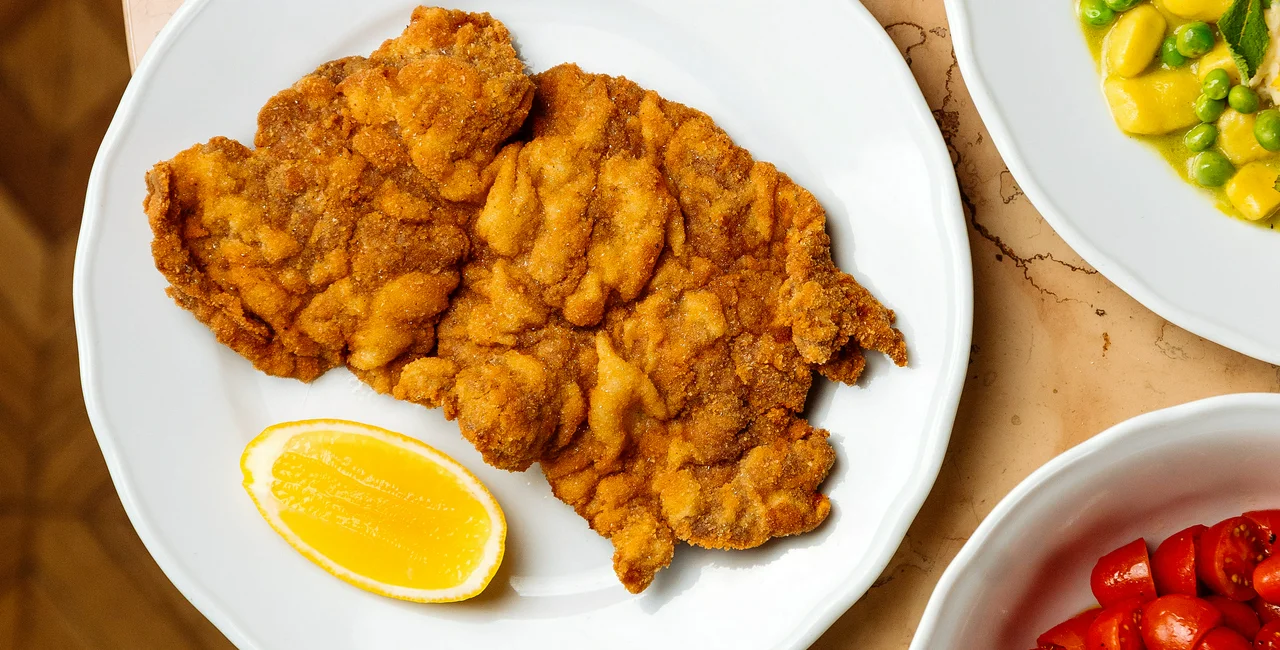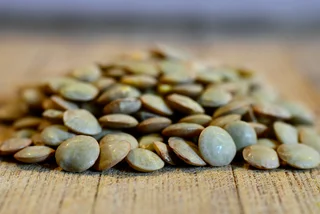The smell of řízek (the Czech version of schnitzel) frying on a Sunday afternoon is an experience that every Czech remembers from childhood. While it’s often one of the first dishes that visitors sample at a Czech restaurant, making it at home isn’t as hard as you’d think.
The key to success? Ensuring a perfectly crispy triple layer of breading outside and the juiciest meat inside. These pro tips from the chefs at Ambiente will teach you how to make the real deal from your own kitchen.
Řízek’s deep-fried roots
The origins of this Czech favorite have been long debated. The tradition stretches back to the Austria-Hungarian empire which encompassed the Czech lands until 1918. The dish's roots are often traced to Austria, home of the quintessential Viennese veal schnitzel. But fried meat in a tasty breaded package has traditionally been eaten in Northern Italy as well.
No matter where řízek comes from, it remains an iconic meal in the Czech Republic today and the Czechs have certainly mastered its preparation. Now you can too with these chef-approved pointers.
Pro tips for the perfect řízky
Řízek is made by breading thin cuts of boneless pork, chicken, or veal in flour, egg, and breadcrumbs. In order to achieve a perfectly crispy crust and juicy inner cutlet, a few simple principles must be followed, according to Ambiente chefs.
Tip 1 Choose the right meat
For a pork schnitzel, ask for a boneless chop or loin at the butcher shop. Pork from the Czech “přestík” breed will ensure the juiciest outcome. For chicken cutlets, go for chicken breast or boneless thigh. Veal schnitzel is typically made from a lean chop (Note: If you buy the right cut of meat, you don’t need to tenderize.)
TIP 2 Triple-coating is key
Triple coating is a process by which a slice of meat is first dredged in flour and beaten egg then dipped in breadcrumbs. For the best triple-coating use semi-coarse flour (in Czech “polohruba.”) Crack the eggs into a shallow dish and whisk thoroughly with a fork before coating the meat with bread crumbs.

Storebought breadcrumbs are fine but the best crunchiness will result from day-old bread that's been freshly crumbed in a blender. Buttery bread such as brioche or varieties with a flourless crust lend the best results. But breadcrumbs from any day-old bread will also do a good job. Sifting the crumbs before breading will prevent large pieces of breadcrumbs from burning while frying.
TIP 3 Skip the oil
In Czech households, vegetable oil (sunflower or rapeseed) is commonly used for frying. But experienced chefs recommend frying cutlets in clarified butter or lard (nothing beats that smell!). At Lokál, řízky are fried in butter while chefs at Kantýna use lard. It’s important to use enough fat to submerge the cutlet to approximately half of its height. Heat the oil to bubbling, tossing some breadcrumbs into the pan to test readiness.
TIP 4 Finish off in the oven
Finishing off the řízky in the oven is an important, often skipped, final step. Once fried on both sides until golden brown, gently shake your schnitzels over the pan to remove excess oil then transfer to the grill rack of your oven (make sure to slide a baking sheet underneath to catch drippings).
Bake in preheated to 120°C oven with fan setting on for about 20 minutes. Don’t put the the schnitzels directly on a baking sheeting as the fat will become trapped underneath causing the crumbs to peel off.
TIP 5 Drizzle with lemon or drizzle with butter
Serve the finished schnitzel with a lemon wedge for squeezing, or drizzle řízky with melted butter or place a pat of butter on each cutlet. In the Czech Republic, řízkek is traditionally served with mashed potatoes, potato salad, or boiled potatoes sprinkled with fresh parsley.

In the Czech Kitchen is a weekly column written in cooperation with the culinary experts from Ambiente. Established in 1995, the Prague-based collective of pubs, restaurants, and fine-dining outlets have transformed the Czech culinary landscape and lent to the widespread awareness of quality food service and production in Czechia. Follow their socials or book your table at www.ambi.cz.












 Reading time: 3 minutes
Reading time: 3 minutes 


















